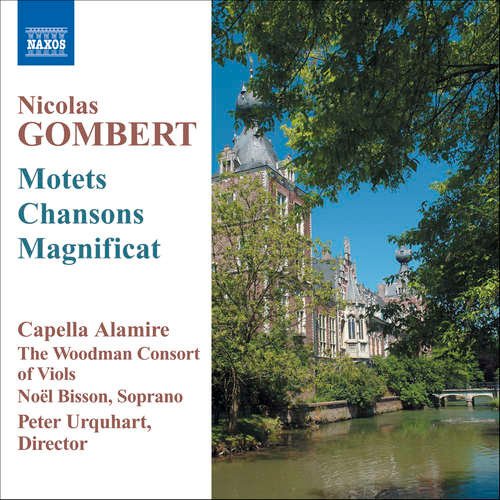Capella Alamire & Peter Urquhart - Nicolas Gombert: Motets; Chansons; Magnific (2006)

Artist: Capella Alamire, Noel Bisson, Peter Urquhart & Woodman Consort of Viols, Peter Urquhart, Woodman Consort of Viols
Title: Nicolas Gombert: Motets; Chansons; Magnific
Year Of Release: 2006
Label: Naxos
Genre: Classical
Quality: FLAC (image + .cue, log, artwork)
Total Time: 68:17 min
Total Size: 289 MB
WebSite: Album Preview
Tracklist:Title: Nicolas Gombert: Motets; Chansons; Magnific
Year Of Release: 2006
Label: Naxos
Genre: Classical
Quality: FLAC (image + .cue, log, artwork)
Total Time: 68:17 min
Total Size: 289 MB
WebSite: Album Preview
01] Salve regina (alternatim)
02] A quoy tient il (a 4)
03] Je suis trop jonette (a 3)
04] O gloriosa Dei genitrix (a 4)
05] Ave Maria (a 5)
06] Mort et fortune (a 4)
07] Triste depart m'avoit (a 5)
08] O malheureuse journee (a 5)
09] Tous les regretz (a 6)
10] Pleust a dieu (a 3)
11] Or suis-je prins (a 4)
12] Aspice Domine quia facta est (a 4)
13] Ave regina caelorum (a 5)
14] Par ung regard (a 3)
15] En attendant l'espoir (a 6)
16] Magnificat quarti toni
It's always great to encounter the recording that can "crack" a composer open, making his or her music accessible to a general listening public. And it's all the better when such a recording comes from beyond the usual quarters, as, for example, with this American recording of Renaissance polyphony. Nicolas Gombert was a Flemish Renaissance composer, a successor (and possibly a student) of Josquin who entered the service of Holy Roman Emperor Charles V. His music, especially in his masses, tends to present itself as a dense, unbroken flow of polyphony. Gombert is one of the composers music history students tend to slog through in hopes of getting to the good stuff. One noted Renaissance scholar used to refer to him, Adrian Willaert, and Giaches de Wert as "the Ert brothers." All that could change with this disc of Gombert motets and chansons. These works are less dense than his masses, but not by much, and they are considerably less limpid than Josquin's pieces in the same genres. But here it is the performances that clarify them. The Massachusetts ensemble Capella Alamire (the name is a pun on an aspect of an old solmization system) under director Peter Urquhart, recording in a church in Portsmouth, NH, slows the motets down slightly and addresses them with a group of eight singers -- the black belt of choral singing. They bring out the rich detail of Gombert's polyphony -- the intricate crossings of lines, the currents that seem to eddy through the music like whitecaps on a rushing stream, the pungent dissonances that Gombert uses to mark section ends in place of clear cadences, and more. And the singing is gorgeous in itself, with individual voices emerging just slightly from the group like shades of light. The mix of motets and chansons is also satisfyingly executed. The sonic resources deployed are completely different; the chansons are sung by a soprano (Noël Bisson), accompanied by a viol group, the Woodman Consort. But Urquhart forges the same kind of clear yet lyrical interpretation in the chansons as in the motets; they don't come off sounding as though they came from a completely different musical sphere, as often happens with secular recordings of music from the sixteenth century. What makes all this even more remarkable is the recording's academic provenance; Urquhart is a professor and researcher at the University of New Hampshire. Academic recordings of Renaissance music tend to be unbearably dull, but this one is lovely and instructive, one of Naxos' best Renaissance releases, and enthusiastically recommended to libraries, students, instructors, and general listeners. -- James Manheim




![Ben Marc - Who Cares Wins (2025) [Hi-Res] Ben Marc - Who Cares Wins (2025) [Hi-Res]](https://img.israbox.com/img/2025-12/29/nqg428wawx3giymyblda2ld32.jpg)



